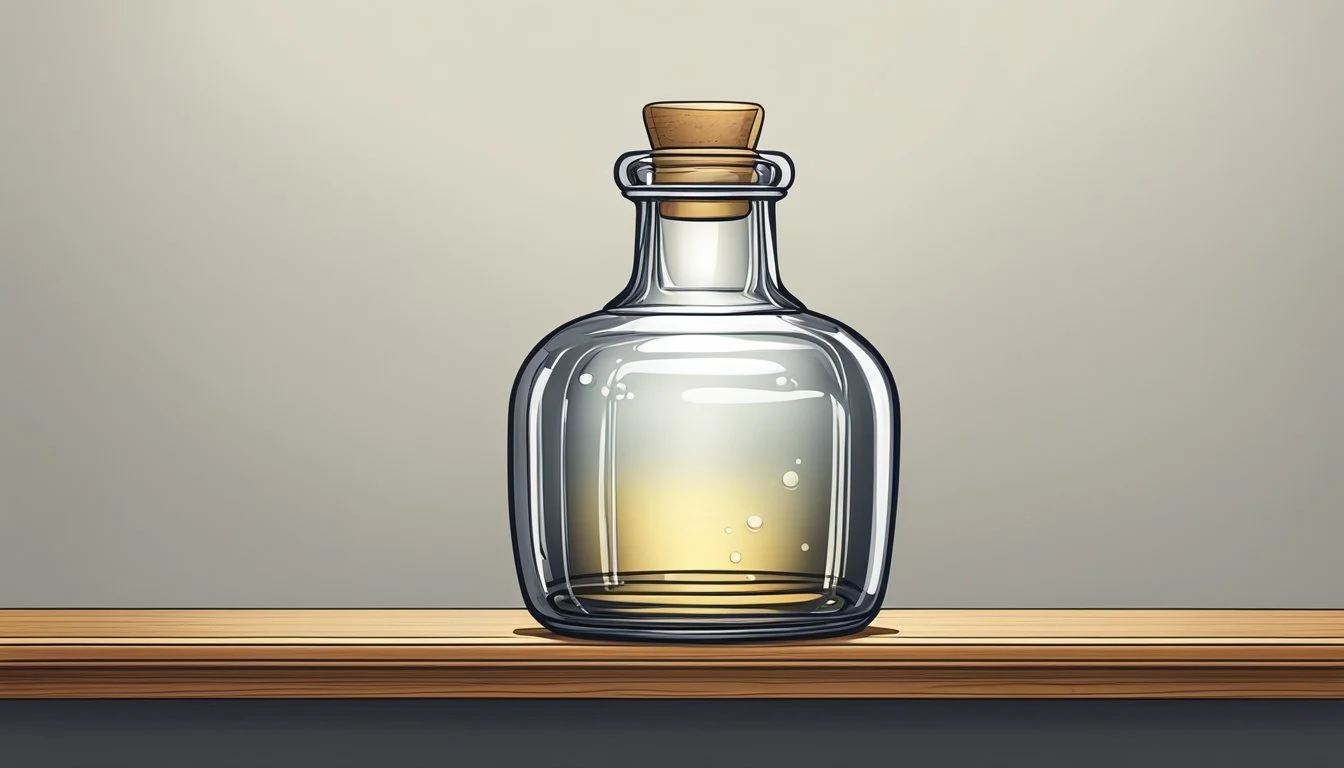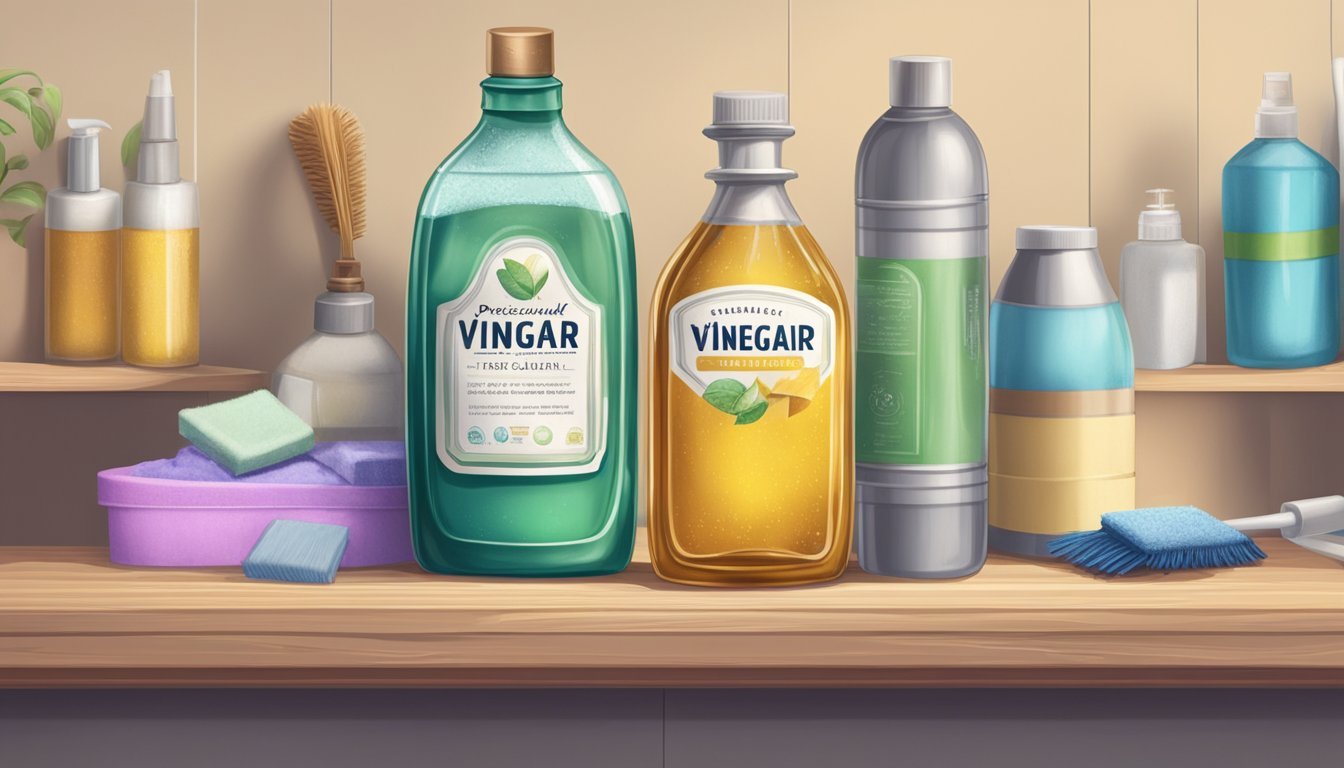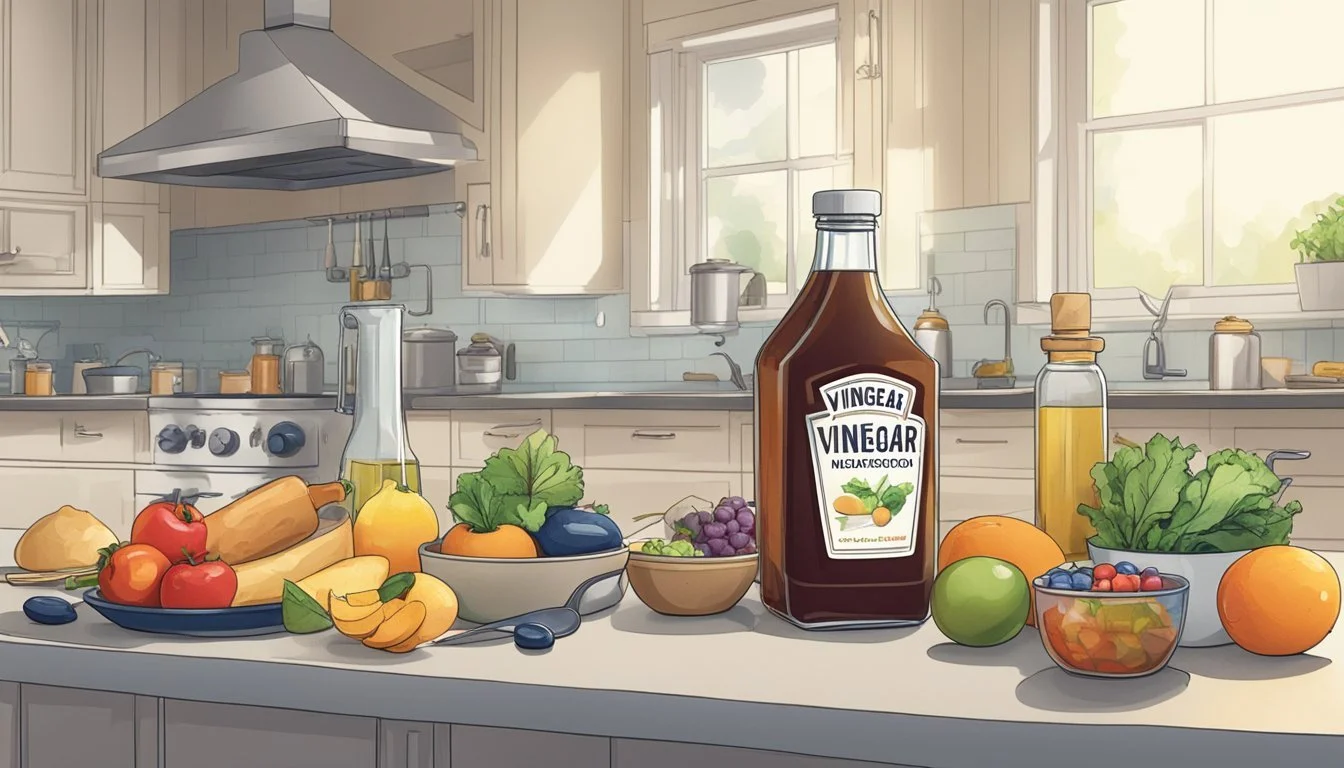Does Vinegar Go Bad?
Understanding Vinegar’s Shelf Life and Storage Needs
Vinegar is well-known for its preservative qualities, stemming from its acidic nature and antimicrobial properties. It is a staple in households for its wide range of uses from cooking to cleaning. Because of these properties, vinegar has an incredibly long shelf life compared to many other condiments and kitchen ingredients. Over time, even past its expiration date, vinegar generally remains safe to consume. However, its quality can experience changes, which may alter its flavor and potency.
The quality of vinegar is influenced by factors such as storage conditions and the type of vinegar. For instance, storing it in a cool, dark place can help maintain its acidity and flavor for an extended period. Distilled white vinegar, being the most common and highly acidic, usually retains its quality longer than specialty vinegars, such as balsamic or apple cider vinegar. Over time, changes in vinegar can manifest as cloudiness or sediment forming, often referred to as 'mother of vinegar,' which indicates natural fermentation but doesn't necessarily mean the product is spoiled.
Understanding the nuances of how vinegar ages allows consumers to better judge when their vinegar has degraded in quality. While a change in taste or appearance might not render vinegar unsafe, it could mean that it is no longer optimal for desired uses, particularly in recipes where its flavor is a critical component.
Understanding Vinegar and Its Properties
Vinegar's effectiveness as a household staple is largely due to its composition and acidity, which vary across its different types.
Composition and Acidity of Vinegar
Vinegar primarily consists of acetic acid and water. The acetic acid is produced by the fermentation of ethanol by acetic acid bacteria. The percentage of acetic acid in vinegar affects its acidity level, typically ranging from 4% to 8% for most types of vinegar. This high level of acidity makes vinegar a hostile environment for bacteria, lending to its high stability and self-preserving qualities.
Different Varieties of Vinegar
There are several varieties of vinegar, each with unique flavors and uses:
Apple Cider Vinegar: Made from fermented apple cider, this type of vinegar is known for its fruity taste.
Balsamic Vinegar: Originating from Italy, balsamic vinegar is made from grape must and has a rich, sweet flavor.
White Vinegar: Often used for cleaning, white vinegar is made from grain-based ethanol and is known for its sharpness.
Wine Vinegar: This vinegar, which includes red and white varieties, is made from fermented wine.
Rice Vinegar: Known for its mild flavor, rice vinegar is commonly used in Asian cuisine.
Each variety contains acetic acid which contributes to their acidic characteristic, but their differences in production lead to varying flavors and suitability for different culinary applications.
Shelf Life and Storage
Vinegar's longevity and safety as a consumable is largely attributed to its acidic nature, which lends it self-preserving qualities. Maintaining the purity and quality of vinegar is contingent upon proper storage practices that inhibit the degradation of its flavor and acidity over time.
How to Properly Store Vinegar
To ensure vinegar retains its quality, it should be stored in a cool, dark place such as a pantry. Exposure to light or varying temperatures can accelerate the degradation process, so keeping vinegar in a stable environment is paramount. It is also essential that vinegar be kept in an airtight container with the cap sealed to prevent the absorption of water from the air, which can dilute its acetic acid concentration and affect flavor. Refrigeration is not necessary for vinegar, as its self-preserving acid nature is adequate to maintain freshness.
Cool Place: Below room temperature, ideally in a pantry.
Dark Place: Avoid exposure to direct sunlight.
Airtight Container: Ensures no dilution or contamination.
Sealed Cap: Prevents oxidative degradation.
Signs That Vinegar May Have Gone Bad
While vinegar is unlikely to spoil in a traditional sense, certain indicators can signal a decline in quality. A change in appearance, such as the development of a haze or sediment, should warrant attention, although it does not necessarily mean the vinegar is unsafe. If there is a noticeable shift in flavor, where the vinegar tastes milder or has an off-flavor, its potency may be reduced due to prolonged storage or improper sealing. However, these changes usually only impact the taste and not the safety of the vinegar.
Appearance Changes: Cloudiness or sediment formation.
Flavor Alteration: Noticeably milder or strange taste.
Factors Affecting Vinegar's Quality
While vinegar is known for its long shelf life, several elements can compromise its quality over time. This section discusses how the presence of 'mother', exposure to heat and light, and oxygen can influences vinegar's quality.
The ‘Mother’ in Vinegar
The 'mother' of vinegar is a natural substance composed of acetic acid bacteria and cellulose that develops in fermented liquids. It appears as a cloudy sediment and is most often seen in unpasteurized vinegar. Although the presence of 'mother' indicates an active fermentation process, it does not necessarily spoil the vinegar. Instead, sediment can be a sign of strong probiotic activity, which some believe adds to the health benefits of vinegar. However, for culinary uses, clear vinegar is often preferred, and the presence of the 'mother' can be aesthetically unpleasant for some consumers.
Impact of Heat and Light
Heat and light are environmental factors that can degrade the quality of vinegar. Exposure to high temperatures can accelerate the breakdown of vinegar's chemical structure, leading to a deterioration of its flavor and acidity. Similarly, light can cause photo-oxidation, which affects the flavor and can reduce the potency of vinegar over time. As a result, vinegar should be stored in a cool, dark place to maintain its quality for as long as possible. The expiration date on a bottle of vinegar serves as a guideline to ensure optimal quality, but vinegar can often remain usable beyond this date if stored correctly.
Exposure to Oxygen
Oxygen exposure plays a significant role in the longevity and quality of vinegar. Once a bottle of vinegar is opened, it comes into contact with air, leading to a slow, ongoing oxidation process. This exposure can alter the flavor, aroma, and overall quality of the vinegar, and in some cases, may encourage the growth of unwanted bacteria. To minimize these effects, vinegar should be stored in airtight containers after opening. Despite these potential changes, vinegar is highly acidic and remains safe to consume for a considerable time after the expiration date, assuming it has been stored under appropriate conditions.
Physical Changes in Vinegar Over Time
Vinegar is renowned for its longevity, yet over time it can exhibit certain aesthetic changes. These alterations, however, do not typically affect its safety for consumption.
Color and Cloudiness
Vinegar may experience a shift in color. With age, some vinegars can become slightly darker or develop a cloudy appearance. This cloudiness is often caused by harmless bacterial growth or the precipitation of the vinegar’s natural components, and while it can alter the aesthetic appeal of the vinegar, it does not render the vinegar unsafe.
Common Changes in Appearance:
Whitening or darkening of the liquid
Development of a cloudy or murky aspect
Changes in Flavor and Smell
The flavor and smell of vinegar are largely dictated by its acidic nature. As vinegar ages, these sensory qualities may diminish, leading to a less pungent smell and a milder flavor. While the altered taste may be less desirable for culinary uses, it does not necessarily indicate spoilage.
Alterations in Sensory Properties:
Decrease in the sharp, acidic flavor profile
Subtle changes to the smell; may become less acrid
It's important to note that any significant changes in flavor, color, or smell, accompanied by an off taste or an abnormal, strong odor, may be indicative of improper storage or contamination and such vinegar should be examined more critically before use.
Vinegar in Cooking and Condiments
Vinegar plays an essential role in culinary practices, utilized extensively as a condiment and in preparing a variety of dishes. Its acidic properties make it a staple in salad dressings, marinades, sauces, and food preservation techniques.
Vinegar in Salad Dressings
Vinegar provides a classic tangy flavor to salad dressings. Recipes often call for balancing it with oil, such as in the ubiquitous vinaigrette, which typically adheres to a 3-to-1 ratio of oil to vinegar. Here's a simple guideline for crafting a basic vinaigrette:
3 parts oil: Olive, canola, or avocado oil are popular choices.
1 part vinegar: Balsamic, red wine, or apple cider vinegar for varied flavors.
Seasonings: Salt, pepper, and optional herbs or mustards to taste.
Marinades and Sauces
Marinades containing vinegar not only impart flavor to meats and vegetables but also help tenderize them through the process of fermentation. The acid in vinegar works to break down proteins, allowing flavors to penetrate deeply. Vinegar-based sauces, like barbecue or hot sauces, also benefit from vinegar's preservative qualities, which help extend shelf life and enhance flavor profiles.
Example of a Vinegar Marinade:
1/2 cup vinegar (e.g., white or apple cider)
1/4 cup oil
Herbs and spices (e.g., garlic, rosemary)
Salt to taste
Vinegar as a Food Preservative
The acidic nature of vinegar makes it ideal for pickling, a form of food preservation that extends the lifespan of perishable items. Vegetables like cucumbers become pickles through a process involving vinegar, water, salt, and seasonings. Vinegar inhibits microbial growth, ensuring that preserved foods remain safe and flavorful for consumption over extended periods.
Basic Pickling Solution:
1 cup water
1 cup vinegar (white distilled or apple cider)
1 tablespoon salt
Additional spices (e.g., dill, mustard seeds)
Non-Culinary Uses of Vinegar
Vinegar’s versatility extends far beyond the kitchen, finding efficacy as a cleaning agent and rust remover, hailed for its organic and antimicrobial properties.
Vinegar in Cleaning
Vinegar, with its acidic nature, is renowned for its role as a natural cleaner. It effectively targets dirt and grime on surfaces ranging from windows to kitchen counters. Here are some specific cleaning applications:
Glass cleaner: Mix equal parts of water and vinegar to create streak-free windows and mirrors.
Surface disinfectant: Dilute vinegar with water to sanitize countertops, given vinegar's antimicrobial properties. It can lessen bacteria and viruses’ presence, although it is not a replacement for commercial disinfectants.
Vinegar as a Rust Remover
Vinegar is also a potent rust remover, thanks to its acidity:
Tools and screws: Soak rusted tools or screws in a vinegar bath overnight, then scrub away the loosened rust.
Garden furniture: Apply vinegar to affected areas to dissolve rust spots on metal furniture.
Culinary Uses Requiring Freshness
While it’s true that vinegar has an extensive shelf life, certain applications may call for fresher vinegar to maintain quality:
Salad dressings: Fresh vinegar ensures a crisp, vibrant flavor profile.
Pickling: Fresh vinegar is crucial for the preservation process to work effectively and provide the desired acidic zing.
Safety and Consumption
Vinegar is renowned for its long shelf life and durability. However, evaluating its safety and identifying any signs of spoilage are crucial for maintaining food safety.
When is Vinegar Safe to Use?
Typically, vinegar is safe to consume even after the "Best By" date, due to its high acid content which acts as a preservative. It can be safely used in cooking, cleaning, and other household purposes. The key is proper storage—vinegar should be kept in a cool, dark place away from direct sunlight. Here are factors to consider for its safe usage:
Sealed Lid: Ensure the lid is tight to prevent oxidation.
Clear Appearance: Generally, it should be free of significant cloudiness, although some natural vinegars may have a cloudy appearance.
Normal Odor: Vinegar should maintain a clean, acidic scent.
When stored correctly, vinegar has a nearly indefinite shelf life and the acidity level should remain stable for a considerable time.
Dealing With Spoilage and Contamination
Vinegar rarely spoils in the traditional sense. However, here are indicators that vinegar may not be suitable for consumption:
Unusual Cloudiness: While some vinegars naturally appear cloudy, a sudden change in clarity might suggest contamination.
Offensive Odor: Any smell that deviates from vinegar's typical acidic aroma could signal spoilage.
Strange Taste: If the flavor is distinctly different from its original taste, the vinegar might be compromised.
In cases of suspected contamination, it is best to err on the side of caution and discard the vinegar to avoid potential food safety issues.
Preserving Quality and Extending Shelf Life
Vinegar is renowned for its longevity, but proper storage and handling can greatly enhance its shelf life and preserve its quality.
Maintaining Optimal Conditions
To ensure a fresh bottle of vinegar maintains its quality, it should be stored properly. The key elements of proper storage include:
Temperature: Vinegar should be kept in a cool, dark place to minimize exposure to heat which can accelerate degradation.
Air Exposure: Limiting air exposure by keeping the bottle tightly sealed prevents the vinegar from absorbing water from the air, which can dilute acidity.
Container: Glass containers are preferred for storage over metal or plastic, as vinegar can corrode metal and leach chemicals from plastic.
The Role of Pasteurization
Pasteurization can play a significant role in preserving vinegar's quality:
Safety: Pasteurizing vinegar helps eliminate any potential harmful bacteria, ensuring that it remains safe to consume.
Shelf Stability: A pasteurized vinegar typically has a more stable and predictable shelf life, as the process neutralizes any microbes that could cause spoilage.
Maintaining these conditions helps to extend the shelf life of vinegar, preserving both its taste and potency over time.






